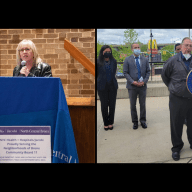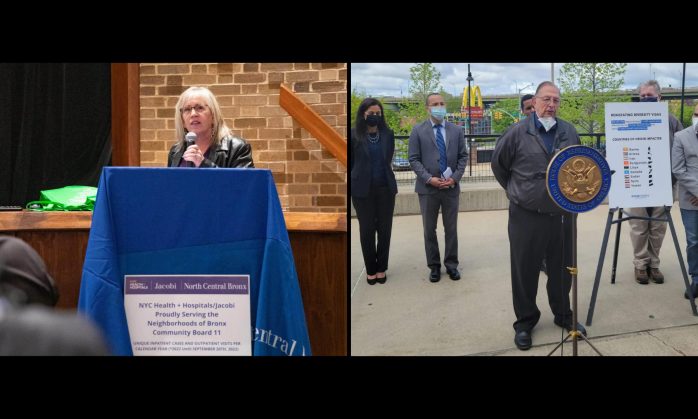The Hunts Point Wastewater Treatment Plant is doing its part to make the East River a thriving habitat once again.
On Tuesday, August 3, city officials announced the completion of a $280 million construction project at the plant that will reduce the amount of nitrogen discharged into the river by 60,000 pounds each day. Although the chemical is harmless to people, it can be deadly for aquatic environments because it can lead to massive algae blooms, which deplete oxygen levels for fish and sea life.
“The fish, they are smiling today,” Eric Goldstein, of the Natural Resources Defense Council, said. “And all the people in the region who swim, boat and fish ought to be smiling too.”
The new equipment and updated facility should reduce the amount of nitrogen in the city waste water by at least 45 percent before it gets pumped back into the river.
According to Jeffrey Weil, acting superintendent of the plant, the most important part of the construction was removing five antiquated air-blowers and replacing them with a more efficient, six-blower aeration system.
He said the equipment, which blows about 80,000 cubic feet of air a minute, draws more air through the water during the treatment, so that a different kind of bacteria can develop that can clean the nitrogen out of the water.
Among other things, the upgrade also included expanding the treatment building, and adding more advanced monitoring and electrical generation equipment to the plant.
The Hunts Point plant was built more than 50 years ago and was not designed to scrub the nitrogen from the wastewater.
According to Vincent Sapienza, deputy commissioner of the Department of Environmental Protection’s wastewater treatment program, the facility focused on scrubbing carbon from the city wastewater before sending it into the river. Because of increasing environmental standards, officials have been looking into cleaning the nitrogen from the water for the past 10 or 15 years, he said.
According to DEP Commissioner Cas Holloway, the plant enhancements were done as part of Mayor Michael Bloomberg’s initiative to open the majority of the city’s shoreline to the public for recreation.
“Here we have one of the most significant investments, and it’s functioning very well,” he said. “So far we’re getting even more nitrogen out than we originally thought, so our investment is paying off.”
The city is looking to improve three other waste water plants by 2010. The $770 million investment should reduce total nitrogen discharges into the East River by 52 percent, officials said.
By 2014, DEP officials also hope to have completed a second improvement project at the Hunts Point plant, which is expected to cost about $20 million and should take out an additional 7,000 pounds of nitrogen from the water per day.
“Since this has to be here, we need to make sure it is a benefit to the community,” Councilwoman Carmen Arroyo said at the press conference, as she overlooked Barretto Point Park in the distance. “So when we come to that beautiful park and get in that pool, we don’t need to be offended by everything that’s going on.”























